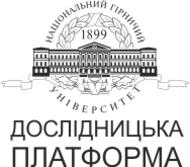№78-20
A weighted average empirical model for determining the capacity of vertical steel tanks during their calibration using the electronic-optical remote measurement method
I. Akolzin1, O. Samoilenko2, Ye. Koroviaka1, O. Adamenko3
1Dnipro University of Technology, Dnipro, Ukraine
2Scientific and industrial instituteSE «UKRMETRTESTSTANDART», Kyiv, Ukraine
3Kyiv National University of Construction and Architecture, Kyiv, Ukraine
Coll.res.pap.nat.min.univ. 2024, 78:225–235
Full text (PDF)
https://doi.org/10.33271/crpnmu/78.225
ABSTRACT
Purpose. Improving the accuracy of oil and petroleum product accounting by implementing a new measurement scheme using an electron-optical remote sensing method using a laser 3D scanner.
Research methodology. To achieve the set goal, the following research methods were used: empirical modeling – to determine the calibration characteristics of vertical cylindrical tanks (hereinafter referred to as the tank) taking into account the actual wall deformations under the influence of the weight of the poured liquid; electron-optical remote measurement method – to calculate the weighted average calibration table by weighted averaging of the calibration tables of the empty and full tank.
Research results. Significant discrepancies were found between the actual deformations of the walls of vertical steel tanks under the weight of the filled liquid and the theoretical models for accounting these deformations, as specified in the regulatory documentation used for their calibration. A weighted empirical model was proposed, which addresses this issue by averaging the calibration tables of the full and empty tank.
Originality. For the first time, a highly accurate determination of the actual deformations of the walls of vertical cylindrical tanks under the weight of the filled liquid was performed using a laser 3D scanner. This allowed the creation of a weighted empirical model, which was used to calculate a weighted calibration table, significantly improving the accuracy of oil and petroleum product accounting.
Practical implications. The obtained weighted calibration table, which takes into account the actual deformations of the tank walls under the weight of the filled liquid, will significantly improve accounting accuracy. This will also allow achieving the required accuracy of oil and petroleum product accounting in tanks whose deformations do not correspond to the theoretical model used in the regulatory documentation for their calibration.
Keywords: interval capacity, weighted empirical model, calibration, electronic-optical distance measurement method, scanning, tank wall deformations.
References
1. Metrolohiia. Rezervuary stalevi vertykalni tsylindrychni. Metodyka povirky: DSTU 4147-2003. (2003). Kyiv: Ukrainskyi naukovo-doslidnyi instytut standartyzatsii, sertyfikatsii ta informatyky. https://online.budstandart.com/ua/catalog/doc-page.html?id_doc=65365
2. Metrolohiia. Rezervuary statsionarni vymiriuvalni vertykalni. Metodyka povirky (kalibruvannia) heometrychnym metodom iz zastosuvanniam heodezychnykh pryladiv: DSTU 7473:2016. (2017). Kyiv: Derzhavne pidpryiemstvo Vseukrainskyi derzhavnyi naukovo-vyrobnychyi tsentr standartyzatsii, metrolohii, sertyfikatsii ta zakhystu prav spozhyvachiv (Ukrmetrteststandart). https://online.budstandart.com/ua/catalog/doc-page.html?id_doc=66443
3. Fixed storage tanks. General requirements. INTERNATIONAL ORGANIZATION OF LEGAL METROLOGY. OIML R 71 Edition 2008 (E). Bureau International de Métrologie Légale 11, rue Turgot –75009 Paris – France.
4. ISO 7507-1:2003. Petroleum and liquid petroleum products – Calibration of vertical cylindrical tanks – Part 1: Strapping method.
5. ISO 7507-2:2022. Petroleum and liquid petroleum products – Calibration of vertical cylindrical tanks – Part 2: Optical-reference-line method or electro-optical distance-ranging method.
6. Samoilenko, O., & Zaets, V. (2022). Calibration of Tanks and Ships’ Tanks for Storage and Transportation of Liquids by Laser Scanning. Applied Aspects of Modern Metrology. https://doi.org/10.5772/intechopen.100565
7. Samoilenko, O., Zaiets, V., Adamenko, O., Akolzin, I., & Glushko, Y. (2022). Application of proficiency testing scheme at determining the tank capacity on the results of laser 3D scanning. Measurements Infrastructure, 3. https://doi.org/10.33955/v3(2022)-018
8. Samoylenko, O., & Zaets, V. (2015). Evaluation by least square method of geometrical parameters and capacity of all tank types by the results of laser scanning. Paris. OIML Bulletin. LVI(3), 14–21.
9. Measuring systems for the mass of liquids in tanks. INTERNATIONAL ORGANIZATION OF LEGAL METROLOGY. OIML R 125 Edition 1998 (E). Bureau International de Métrologie Légale 11, rue Turgot –75009 Paris – France.
10. Vessels for commercial transactions. INTERNATIONAL ORGANIZATION OF LEGAL METROLOGY. OIML R 138 Edition 2007 (E). Bureau International de Métrologie Légale 11, rue Turgot – 75009Paris – France.




